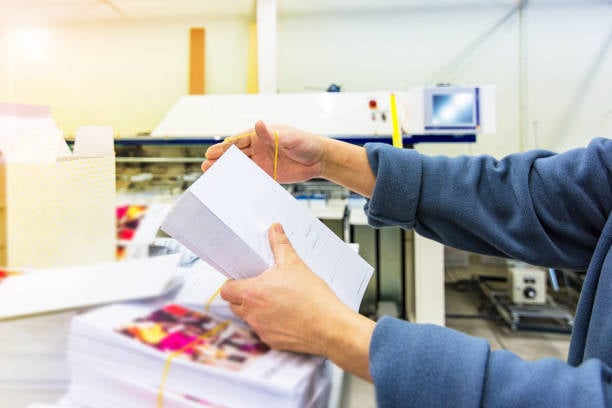A very efficient and inexpensive technique to draw customers and clients in is by printing a magazine. Curiosity leads you to open a magazine when it shows up in your mailbox and to go through the pictures and information inside. Each magazine you produce has the potential to reach several readers as it is distributed from one person to another. Magazine printing is one of the most effective marketing strategies for building brand recognition when you use the correct papers.
What Sort of Paper Is Used When Printing Magazines?
Your goals and your budget, among other things, will influence the kind of paper you select for your magazine printing job. Magazines, which may contain articles and advertising, are frequently used to advertise events. The high-quality photos in catalogs that showcase the attributes of the products for sale are highly helpful to retail firms. Depending on the marketing goals you have for the magazine, you will determine the weight and finish of the paper for printing.
Quantity, size, paper weight, and finish are the four key determinants of your magazine printing costs. It's crucial to take into account the cost of distribution as well as how different paper weights and sizes may impact your distribution budget.
Finding the most practical strategy to accomplish your marketing goals is usually a good idea. Never, though, should you choose to save money at the expense of your campaign's success. Making the right decisions for your magazine printing is facilitated by having a specified budget.
-
Paper Weight
GSM, or grams per square meter, is the unit of measurement for paper weight. The paper in your workplace printer is typically approximately 80 GSM, which serves as a handy benchmark. Although heavier and more difficult to fold than thinner paper, it is more resilient and less prone to tear, making it more expensive to send. For the internal pages of magazines, 80 to 90 GSM paper is commonly used, whereas stronger paper is used for the cover's protective layer.
The use of newspaper in the interior of a prospectus for an investment could result in cost savings on printing and shipping. Typically weighing between 35 and 55 GSM, newsprint is exceedingly thin. A newspaper with a thick, glossy cover and newsprint content might look quite appealing. If you need to publish more text than photographs for your magazine, newsprint is a good option.
Keep in mind that you can always mix different types of paper in your publication, depending on your requirements. A few glossy pages in the midst of your document would be an example.
-
Plain Paper
Pages with a lot of text should be printed on uncoated paper. It is simpler to read because its surface is not polished. Since uncoated paper can be recycled after use, it is also more environmentally beneficial. Without a coat, the paper can absorb ink more readily, making it simpler to write notes on after printing.
It's crucial to think about the type of paper you'll use when planning your final magazine printing. The uncoated paper produces a subtle, creative aesthetic that works incredibly well for many advertising goals. Printing a sample of your graphics on a variety of papers will assist you to decide which paper will give your graphics the best visual impact before you choose it for your complete print run.
-
Size of Paper
Magazines can be as small as a paperback book or as big as a newspaper, and they come in all different forms and sizes. Although there are other custom sizes available, conventional sizes are more likely to be the most affordable. The ideal approach for tying your magazine together will depend on how many pages it has. The best technique to determine the appropriate paper size is to double or fold a regular sheet of office printer paper. Standard printing sizes have been adopted by printers to maximize the use of paper rolls.
Although they cost more, really large publications have the benefit of better visibility. Consider using a large paper size if you want to add a poster in the middle of your magazine that can be removed for display purposes. If you intend to give out copies of your magazine at neighborhood coffee shops or bookstores, large magazines are a wonderful option. Smaller magazines are practical for mailing or distributing out to individuals.
Every printed item that bears your brand name or emblem serves as a representation of your company. In a world where consumers are constantly being flooded with digital advertising, printed materials give you the chance to stand out. A well-designed magazine offers significant variety and increased artistic control. The appropriate paper choice can increase the effectiveness of your magazine, whether you're using articles to share critical information with readers or clients or dynamic photos to advertise products.
To find out more about magazine printing, contact HUIDA Print-All right away. Our qualified team can offer the guidance and experience required to make your upcoming marketing campaign successful.

